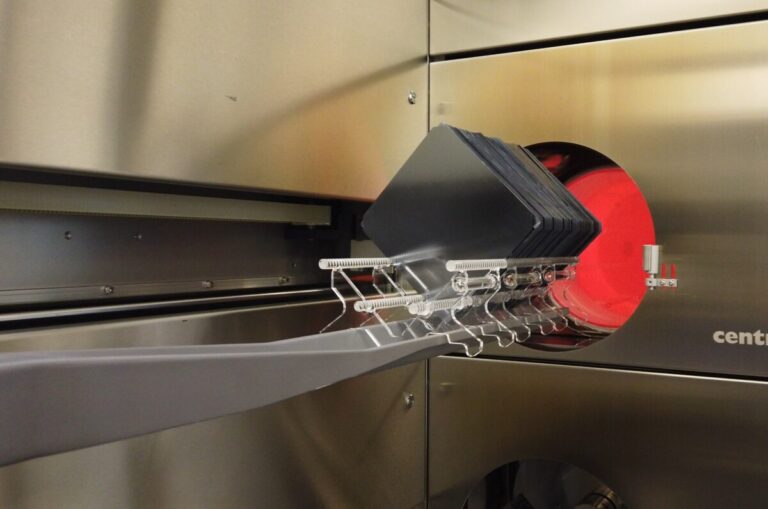The University of Konstanz and Chinese panel maker Longi have assessed the impact of Testing on Letid in industrial Czochralski grown Gallium-doted P-Type Silicon ingrons and have discovered that defective density depends on impure concentrations in De Melt, which are observed in the case of the case They are observed in the case of the case of the case of the case of the case of the case of the case of the case of the case of interstitial iron concentrations.
A group of researchers from the University of Konstanz in Germany and Chinese solar module manufacturer Longi has investigated the impact of impurity concentrations caused by Getfing on the long-term stability of the lifetime of the load carrier in charged Czochralski-Grown silicon (RCZ-Si).
Testing is widely used in the PV industry. It includes three steps and is used during crystal growth to remove containers and other forms of defects in waffles. Because of this process, the impurities are initially released in a fixed solution and then diffusion by the silicon is undergone. Finally, they are trapped in an area away from the active circuit areas of the waffle.
Tringing has already been embedded in most current solar cells, by phosphordificies in perc or perx devices, as well as in al-BSF cells. It is also embedded in Topcon sun cells, although its effectiveness varies greatly, and in cells of the hetero junction of silicon It Can be used as a pre -treatment to improve the quality of silicon substrates.
“In our research, state-of-the-art material from the industrial Czochralski-melting story was investigated with regard to its quality,” said the main author of the research, Joshua Kamphues told PV -Magazine. “As a result, the long -term stability was analyzed in terms of material quality in terms of cargo carrier lifespan for waffles of subsequently drawn ingot with various impurity concentrations. We could demonstrate how the crystal growth process can influence the relegation -in the current industrial waffle material. “
In the newspaper “The impact of tender on Letid in industrial Czochralski-grown Gallium-moored P-Type silicon ingrons with melt charging“Published in Solar energy materials and solar cellsKamphues and his team explained that they used a lifelong equivalent defect -tightness standard known Anleq to quantify the impact of observed defectkinetics during light and raised temperature induced demolition (Letid).
Over time, Letid can cause significant performance losses in PV modules in the field. The problem was first recognized around 2012; The industry did not know the exact cause behind it, but it was fast to develop mitigation strategies.
For their analysis, the scientists used waffles supplied by Longi, which were cut from ingots obtained by two different RCZ-SI growth processes, in which nine ingot were drawn with different lengths and thicknesses of 170 µm and 160 µm. The passivating layer was dropped off by plasma-improved chemical vapor deposits (PECVD).
“All waffles were fired at an industrial belt oven. Various set temperatures were used to reach a sample peak temperature measured at 800 ° CChecked with the help of a K-type thermocouple that is pushed in the middle of the sample, ”the research team emphasized and noted that during the entire consecutive process it concentrated the impurity concentrations during charging the melting (FE) (FE).
“A special challenge was that we could only follow indirectly elementary impurity concentrations of our material, except for the iron concentration, which could be determined,” Kamphues explained further. “The higher Letid size for subsequently drawn Ingots can therefore be correlated with higher impurity concentrations, but not with a specific impurity. The fact that a tender step reduces the interstitial fe -content, but does not have an effect on Letid -Occupation, leads to the conclusion that Fe itself is not directly involved in the Letid process. “
In addition, other experiments with ISO-generative treatments showed that Letid-Kinetics was different for waffles on various Ingot positions. “It was surprising for us that the Letid-Kinetics for ISO-injective treatment was the same for waffles of different ingrots despite the considerably changed Letid size. That is why we could prove that an increased level of impurability in our samples only influences the degree of Letid, but not Letid -Kinetics, ”Kamphues concluded.
He explained that too With the current shift to N-type CZ-Si, the industry is very interested in the long-term stability behavior of this type of material. “We are currently investigating industrial melt-oriented N-type material with different dopant elements and will report on this subject in the upcoming SiliconPV conference in April,” he concluded.
This content is protected by copyright and may not be reused. If you want to work with us and reuse part of our content, please contact: editors@pv-magazine.com.


